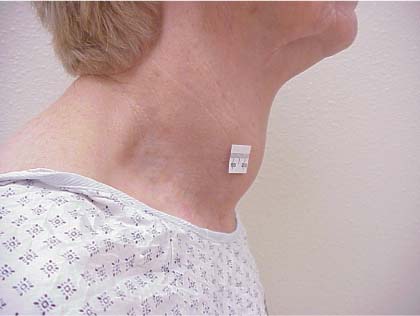The FP recognized this as a large goiter with symptoms of hypothyroidism. Laboratory testing revealed an elevated thyroid-stimulating hormone (TSH) level and a low free thyroxine level, confirming hypothyroidism.
Most goiters are not associated with thyroid dysfunction. The prevalence of goitrous hypothyroidism varies from 0.7% to 4% of the population.
Patients with endemic goiter should be given iodine. Large goiters that impinge upon the trachea or that don’t respond to medications may be treated with surgery.
Patients with goiter and hypothyroidism are treated with levothyroxine as follows:
- Younger patients start with 50 to 100 µg/d increasing by 25 to 50 µg/d at 6-week intervals until the TSH is normal (approximately 1.6 µg/kg/d of levothyroxine).
- Older patients, or those with cardiac disease, start with 25 µg/d and advance slowly to normalize the TSH (approximately 1 µg/kg/d of levothyroxine).
In this case, the FP started the patient on levothyroxine 100 µg/d and recommended that her TSH level be tested again in 6 weeks.
Photo courtesy of Dan Stulberg, MD. Text for Photo Rounds Friday courtesy of Richard P. Usatine, MD. This case was adapted from: Smith M. Goiter and hypothyroidism. In: Usatine R, Smith M, Mayeaux EJ, et al, eds. The Color Atlas of Family Medicine. New York, NY: McGraw-Hill; 2009:954-958.
To learn more about The Color Atlas of Family Medicine, see:
• http://www.amazon.com/Color-Atlas-Family-Medicine/dp/0071474641
You can now get The Color Atlas of Family Medicine as an app for mobile devices including the iPhone, iPad, and all Android devices by clicking this link:


